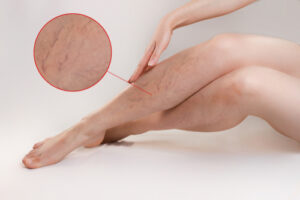
Diagnosing Peripheral Artery Disease
Peripheral artery disease is a condition in which blood flow to the distal parts of the body, such as the feet, is limited due to arterial narrowing. It is very treatable, so there is immense benefit in knowing the signs of this disease and where to get help. A vascular specialist may utilize several techniques to diagnose this condition. The first is to perform a physical examination. Signs of the disease may appear on the skin in the form of color change, swelling, or an unhealed wound. The doctor may also use a stethoscope to hear the sound of circulation in the area of suspected narrowing. A simple noninvasive test may be performed to measure the blood pressure difference between the ankle and the arm. This is referred to as the ankle-brachial index. Depending on the findings of the consultation, exam, and noninvasive tests, the doctor may recommend angiography for further diagnostic information. An angiogram is an outpatient procedure that involves the use of MRI or CAT Scan technology and a dye or special chemical (injected into a vein) to observe the flow of blood through the arteries.
Treating Peripheral Artery Disease
The objective of treatment for PAD is to improve circulation through the affected area. This may involve one or more of the following, depending on the severity of the blockage:
- Cholesterol-lowering medication. High cholesterol is a primary contributing factor to peripheral artery disease. A blood test can measure levels and determine if medication would be appropriate.
- Blood pressure medication may be prescribed to help manage risk factors that can contribute to the narrowing of the arteries.
- Angioplasty may be necessary in more severe cases of peripheral artery disease. This minimally invasive procedure opens a clogged artery using a small instrument and balloon, which is inserted at the point of the narrowing to compress the plaque and allow circulation to improve.
Metropolitan Vascular Institute performs angiograms, angioplasty, and other minimally-invasive procedures to treat peripheral artery disease. For more information or to schedule a visit to our Waldorf, MD facility, call (301) 374-8540.

